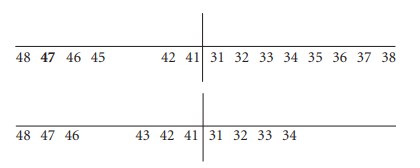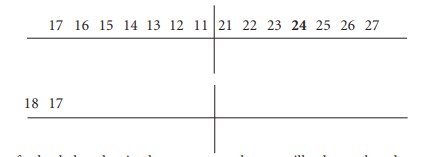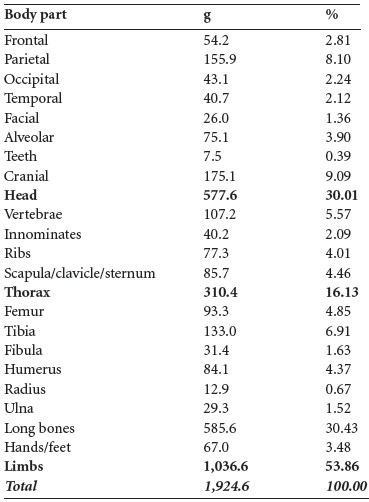County: Limerick Site name: RATHCAHILL WEST, CO. LIMERICK
Sites and Monuments Record No.: SMR LI-043-008001 SMR LI-043-00802 Licence number: E1113
Author: EAMONN P. KELLY AND NESSA OCONNOR
Site type: Early Bronze Age graves
Period/Dating: —
ITM: E 712161m, N 712810m
Latitude, Longitude (decimal degrees): 53.153977, -6.323034
Introduction
In early August 1985 a short cist containing a cremation was discovered during bulldozing operations on the lands of Mr James Leahy near Newcastle West, Co. Limerick. The cist was discovered during the removal of a field fence. Approximately 7m south-west of the grave, an area of burning measuring 1.5m in diameter by 1m in depth was also removed. The discovery was reported to the NMI by Mr John Cussen of Newcastle West, and a rescue excavation was undertaken by Eamonn P. Kelly and Nessa O’Connor. The human remains were examined by Barra Ó Donnabháin.175
Location (Fig. 3.106)
The site is in the townland of Rathcahill West, south-west Co. Limerick, approximately 9km south-west of the town of Newcastle West.176The cist was at an altitude of 250–260m above sea level on the western end of a ridge running east/west. The location is overlooked by high ground immediately to the east and to the south, and overlooks a broad valley to the west and north. An indentation was noticed in the field fence, which appeared to avoid the burial area.


Close to the grave was an area that had been intensely burnt. It is possible that this was the site of the funeral pyre associated with this burial.177
Description of site
The short cist was trapezoidal in plan, with its long axis aligned north-north-west/southsouth-east. It was of small proportions, measuring 0.5m long by 0.4m wide by 0.35m deep internally, the northern end being the widest (Fig. 3.107). Thin, edge-set slabs formed the walls of the cist, one each at the eastern, western and southern sides, and three placed parallel at the northern end. The maximum dimensions of these slabs are 0.68m long by 0.42m high by 0.05m thick. The southern end slab inclined outwards, and the outermost of the three northern end slabs leaned slightly inwards. A number of slabs had been placed around the edges of the cist, possibly to support the side and end slabs. The cist was covered by a capstone, 0.65m long by 0.45m wide by 0.06m thick. This did not extend the full length of the cist, and the consequent gap at the southern end was filled by the placing of a flat slab overlapping the capstone.178 The floor of the cist was paved with a single flat slab measuring 0.65m long by 0.31m wide by 0.03m thick, with a narrow gap along the western side filled with small stones. The northern, eastern and southern side slabs had been placed directly on the main paving slab, while that at the west was placed in the earth. The pit dug to receive the cist was suboval in shape, measuring 0.85m long by 0.64m wide by 0.5m high.
The cist contained a large cremation deposit representing two adult males (1985:126) and some charcoal; no accompanying artefacts were found. The cremation was placed in a central position in the cist, the deposit being 0.15m thick. The remains were examined by Barra Ó Donnabháin, who found them to be incompletely incinerated so that a number of bones were almost complete. Some small stones that were mixed within the cremation deposit were identified by Dr J. Jackson as part of the local Millstone Grit stratigraphy. No pottery or other grave-goods were found in the cist.
Comment
A charcoal sample from the site was dated to 3530±35 BP. When calibrated, this gives a date bracket of 2016–1739 BC at 95.4% probability.179 This date is now considered not to be sufficiently precise, and a date from the carbonate in the cremated bone would give a much more accurate date. This was not possible within the scope of the present study. Unfortunately, the lack of any associated finds means that closer dating is not possible at the Moment.
HUMAN REMAINS
BARRA Ó DONNABHÁIN
Introduction
A relatively large deposit—943.2g—of cremated human bone (1985:126) was examined. This contains the remains of two adult males. Some of the bones were incompletely incinerated.
Description of the remains
It was not generally possible to determine which fragments derived from which individual, except where duplication of skeletal elements occurred. Table 3.49 lists the weights and percentages of the identified fragments from both individuals. This shows that the deposit consists of a comprehensive collection of all body parts. The recovered fragments include many large fragments of bone. The largest is a piece of both parietals that has a maximum length of 105.4mm. The remains do not appear to have been crushed after retrieval. Such crushing of remains seems to have been a relatively common procedure in early Bronze Age cremations.
The presence of two individuals is indicated by the duplication of bones or pieces thereof: the supraorbital margins of the frontal; the squama of the occipital; the mandible; the maxilla; and the calcaneus.
Sex
The shape of the supraorbital margins, the mastoid processes, the mandibles and the nuchal crests suggest that both individuals were males. This is borne out by the general size and thickness of the bones.
Age
The cranial fragments are clearly drawn from two individuals—one a middle or older adult (40+ years) and one a younger adult (18–35 years). This is stated with diffidence as these ages are indicated by the state of fusion of the endocranial sutures and by the presence of arachnoid depressions in the skull of the older person. Fragments of two pubic symphyses were recovered. One of these belonged to a younger adult.
Dentition
The dental remains were relatively complete, but it was not possible to determine which mandible belonged with which maxilla. The presence of unhealed tooth sockets indicates that the two mandibles contained the following teeth at the times of death (teeth in bold were lost ante-mortem; tooth positions that are left blank indicate that this portion of the jaw was not recovered):

The presence of a healed socket in the more complete mandible shows that the lower right second molar was lost during life.
The two maxillae contained the following teeth at the times of death:

Again, the presence of a healed socket in the more complete maxilla shows that the upper right first premolar was lost ante-mortem. It is tempting to group the more complete mandible and maxilla together, especially as both show in vivo tooth loss. Unfortunately, this by the evidence and such a comparison cannot be made with any degree of certainty
Pathology
The only pathological changes noted in the remains were degenerative changes in the spinal column. The remains of at least six vertebral centra were recovered. These were all parts of either lumbar or thoracic vertebrae. At least four of these centra have moderate or severe degrees of osteophytic lipping, while osteoarthritis was noted in two posterior vertebral joints.
No other pathological changes or skeletal anomalies were noted. This does not mean that these did not occur—the cremation process often destroys the evidence of such changes.
Table 3.49—Weights and percentages of identified bone fragments, 1985:286.

Firing
While most of the bone fragments (c. 90%) were thoroughly calcined, many pieces (mostly parts of long bones) were not completely burnt. These inefficiently incinerated fragments include portions of the hip bones, legs and tarsals, as well as some of the teeth, one shoulder and one elbow joint. The inefficiently burnt fragments seem to come from one body. There are also eight fragments of unburnt human skull. These belong to a middle-aged or older adult. As the remains of both skulls noted in the cremated remains were very thoroughly calcined, it seems unlikely that these eight fragments belong to either skull. Even if, as can occur, a skull burst during the burning process, scattering the pieces of bone beyond the pyre, some evidence of charring would be expected.
Animal remains
The charred proximal end of the femur of a hare (?) was found with the remains.
Conclusions
The remains are those of two adult males, one of whom was probably a younger adult while the other was probably over 40 years at the time of his death.
The only pathological change noted was the presence of degenerative changes in the vertebrae. This is not an unusual occurrence in early population groups. This condition is usually due to the normal ‘wear and tear’ on the bones of the back that is the result of mundane day-to-day activities. As such, the progress and severity of the disease are agerelated, and it seems likely that the affected bones belong to the older of these individuals.
This deposit is unusual when compared to most of the other Irish cremations of a similar date examined by the author. The majority of these cremations were highly efficient procedures, producing well-calcined bone fragments. This was not the situation with at least one of the individuals from this site, as many of the fragments were incompletely burnt. These fragments seem to come from one corpse—indicating, perhaps, that the individuals were cremated separately. In the case of the person who was inefficiently burnt, it seems likely that insufficient pyre material was placed over the legs and perhaps down one side of the body. Apart from the teeth, the cranial and most of the thoracic remains were well burnt. Despite the relative inefficiency of the cremation process, the retrieval of bone thereafter appears to have been meticulous, with portions of all major body parts being recovered. The remains do not appear to have been crushed prior to their interment.
APPENDIX 1
J.S. JACKSON
The material comprises small, angular fragments of dark grey and buff sandstone, dark grey micaceous siltstone, indurated and tenacious pale buff sandstone with ferruginous quartz, brown with superficial iron staining. The material can be matched with the sandstone/siltstone/shale succession in the local Millstone Grit (Namurian) stratigraphy. Rathcahill West is situated within the Millstone Grit outcrop and provenance can therefore be immediately local.
175. A substantial account of the site was published in The Annual Observer, the journal of the Newcastle West Historical Society, before the human remains had been examined (Kelly 1987).
176. Parish of Monagay, barony of Glenquin. SMR LI-043-008001. IGR 122350 127782.
177. SMR LI-043-00802. IGR 12235 12780.
178. This slab was 0.38m long by 0.41m wide by 0.03m thick. In the pre-excavation photograph the cist appears to be covered by two capstones, but in section the overlapping stone only covers a small proportion of the cist area.
179. GrN-14251.